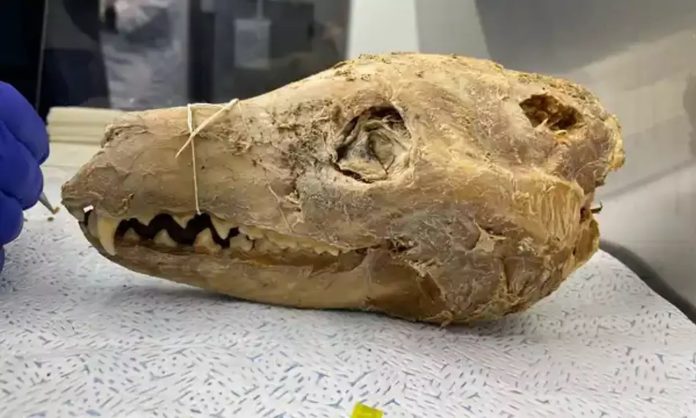
Researchers at a Melbourne museum have made a groundbreaking discovery that could aid in the resurrection of the extinct Tasmanian Tiger, or thylacine. Hidden in a cupboard for over 110 years, they found a remarkably well-preserved thylacine head submerged in ethanol. This unexpected find could provide critical RNA material necessary for reconstructing the animal’s genome, previously thought lost.
The Tasmanian Tiger, characterized by its dog-like appearance and tiger-like stripes, was last seen in captivity in 1936 and officially declared extinct in 1986. The project to bring it back to life is led by the American biotechnology company Colossal, which has raised $235 million for various de-extinction initiatives, including the woolly mammoth and dodo.
Professor Andrew Pask, heading the thylacine genetic restoration research at the University of Melbourne, described the condition of the discovery as “gruesome,” but emphasized its importance in advancing research. The preserved tissue contains long sequences of DNA and active genes related to the animal’s sensory functions, allowing scientists to better understand its biology.
Pask expressed excitement about the project’s progress, noting they have achieved significant milestones in their research. This discovery not only enhances the understanding of the thylacine but also serves as a critical step toward accurately recreating the species.














